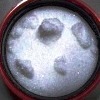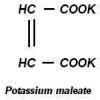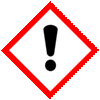Potassium Persulfate Pure & Analytical Reagent Manufacturers, with SDS GHS MSDS Sheet |
Supplier, Manufacturer, Exporter of Potassium Persulfate Pure & Analytical Reagent, Muby Chemicals of Mubychem Group, established in 1976, is the original manufacturers of Specialty Chemicals, Pharmaceutical Excipient, Fragrance Food & Flavor chemicals, Reagent Grade Chemicals, Shale Gas Fracturing Chemicals in India. Mubychem Group has several manufacturing facilities spread across Western India and world wide contacts and toll manufacturers. We are exporting globally to countries like USA, Canada, Europe, UAE, South Africa, Tanzania, Kenya, Egypt, Nigeria, Cameroon, Uganda, Turkey, Mexico, Brazil, Chile, Argentina, Dubai, Korea, Vietnam, Thailand, Malaysia, Indonesia, Australia, China, Germany, France, Italy Portugal, Bangladesh, etc. The products are offered as per required specifications and in correct shape and size in mm or meshs or microns as specified by the buyer. The participating units have one or more accreditations like FDA - cGMP and GLP approval, ISO-9001 Certified, "REACH" Registered, ISO-14001, ISO/IEC 17025, ISO-22000, FSSC 22000, ISO 45001, Kosher Certified, Halal Certified, HACCP, FSSAI. We offer Commercial Pure & IP BP EP Ph Eur USP NF JP FCC Food Grade Analytical Reagent Grades of Chemicals |
| Bookmark this Web Site -- or -- Email This Page Info to a Colleague or Yourself |
Search our website here:







Potassium persulfate: CAS Number: 7727-21-1, EINECS EC Number: 231-781-8, Molecular Formula: K2S2O8, Molecular Weight: 270.32, HS Code ---**
How big is your requirement or how small
We serve it all.
Specifications, Safety Data Sheet, Manufacturing process details, Wholesale retail buy sell prices, Uses etc available on line in these pages for Potassium persulfate.
For SDS MSDS Sheet Click
SDS MSDS Sheet of Potassium persulfate Manufacturers
Potassium persulfate
Pure Suppliers

Potassium persulfate is the inorganic compound with the formula K2S2O8. Also known as potassium peroxydisulfate or KPS, it is a white solid that is highly soluble in water. This salt is a powerful oxidant. Potassium persulfate is used as an initiator for emulsion polymerization reactions, in the preparation of acrylic, vinyl, styrene, neoprene, styrene-butadiene and other resins. It is also used in depolymerization in modification of starch, as a booster in hair bleaching formulations in cosmetics and as a gel breaker in oil recovery systems.
General Specifications of Potassium Persulfate
Appearance: white, crystalline.
Assay active oxygen content: min. 98.5 minimum
Chloride and chlorate(as Cl): 0.005% w/w maximum
Manganese (Mn): 0.0003% w/w maximum
Iron(Fe): 0.004% w/w maximum
Heavy metals (as Pb): 0.002% w/w maximum
Moisture: 0.15% w/w maximum.
Potassium Peroxydisulfate Analytical Reagent Grade
Potassium Persulfate
K2S2O8, Formula Wt 270.32
CAS Number 7727-21-1
REQUIREMENTS
Assay: 99.0% K2S2O8 minimum
MAXIMUM ALLOWABLE
Insoluble matter: 0.005%
Chlorine compounds (as Cl): 0.001%
Nitrogen compounds (as N): 0.001%
Heavy metals (as Pb): 0.001%
Iron (Fe): 5 ppm
Manganese (Mn): 2 ppm
We manufacture and supply as under:
Ammonium Persulfate or Persulphate
Manufacturers:
MUBY CHEMICALS
Ambernath Mumbai, Ankleshwar Gujarat, India
TEL: (OFFICE) +912223770100, +912223726950
Current Date Time in India GMT+5:30
e-mail: info@mubychem.com
USA, Canada, Mexico and other American neighbouring buyers may
e-mail: us@mubychem.com
Call toll-free 1-877-682-9243 (1-877-MUBYCHEM)

Copyright and Usual Disclaimer is Applicable.
Last 6 November, 2025




Exporters to USA Canada UAE Europe South Africa Tanzania Kenya Uganda Egypt Nigeria Turkey Mexico Brazil Argentina Chile Dubai etc.
Global or International Suppliers, Exporters, Importers, Manufacturers
I shall pass through this world, but once. If therefore, there is any good that I can do, or if there is any favor that I can show to a fellow human being, let me do it now. Let me not defer or neglect it. For I shall not tread this way again
Potassium Persulfate SDS, Safety Data Sheet
MSDS Sheet, Material Safety Data Sheet 14-Nov-20
1. Product & Company Identification
Product Name & Other Names: Potassium persulfate or Potassium peroxodisulfate.
CAS No.: 7727-21-1
EINECS EC Number: EC 231-781-8
Molecular Weight: 270.32
Chemical Formula: K2S2O8
Relevant uses and uses advised against (if any): Oxidizer for Oil & Gas Wells and Industrial Use.
Supplier: As per letterhead.
2. Hazards Identification
GHS, Globally Harmonized System Classification in accordance with 29 CFR 1910
Classification according to Regulation (EC) No 1272/2008
Oxidizing Solids Category 3, H272
Acute toxicity - Oral Category 4, H302
Skin corrosion/irritation Category 2, H315
Serious eye damage/eye irritation Category 2A, H319
Respiratory sensitization Category 1, H334
Skin sensitization Category 1, H317
Specific target organ toxicity (single exposure) Category 3, H335
Acute aquatic toxicity Category 3, H402
Labeling according GHS & Regulation (EC) No 1272/2008
GHS Label Elements  Oxidizing Solid |
GHS Label Elements  Irritant |
GHS Label Elements  Health Hazard |
Signal Word: Danger
Hazard Statements:
H272 - May intensify fire; oxidizer
H302 - Harmful if swallowed
H315 - Causes skin irritation
H317 - May cause an allergic skin reaction
H319 - Causes serious eye irritation
H334 - May cause allergy or asthma symptoms or breathing difficulties if inhaled
H335 - May cause respiratory irritation
H402 - Harmful to aquatic life.
Precautionary Statements - Prevention
P210: Keep away from heat/sparks/open flames/hot surfaces. - No smoking.
P220: Keep/Store away from clothing/combustible materials
P221: Take any precaution to avoid mixing with combustibles
P261: Avoid breathing dust.
P264: Wash face, hands and any exposed skin thoroughly after handling
P270: Do not eat, drink or smoke when using this product
P271: Use only outdoors or in a well-ventilated area
P272: Contaminated work clothing should not be allowed out of the workplace.
P280: Wear protective gloves/ protective clothing/ eye protection/ face protection
P285: In case of inadequate ventilation wear respiratory protection
Precautionary Statements - Response
P301+P312: IF SWALLOWED: Call a POISON CENTER or doctor if you feel unwell.
P302+P352: IF ON SKIN: Wash with plenty of water.
P304+P341: IF INHALED: If breathing is difficult, remove to fresh air and keep at rest in a position comfortable for breathing.
P305+P351+P338: IF IN EYES: Rinse cautiously with water for several minutes. Remove contact lenses, if present and easy to do. Continue rinsing.
P314: Get Medical advice/attention if you feel unwell.
P330: If swallowed, rinse mouth.
P333+P313: If skin irritation or rash occurs: Get medical advice/ attention.
P337+P313: If eye irritation persists: Get medical advice/ attention
P342+P311: If experiencing respiratory symptoms: Call a POISON CENTER or doctor.
P362: Take off contaminated clothing and wash before reuse.
P370+P378: In case of fire: Use water for extinction
Precautionary Statements - Storage
P402: Store in a dry place.
P403+P233: Store in a well-ventilated place. Keep container tightly closed
P501: Dispose of contents/container in accordance with local, regional, national, international regulations.
Classification according to EU Directives 67/548/EEC or 1999/45/EC:
Hazard Symbols:
O Oxidizing
Xn Harmful
Xi Irritant.
Risk Phrases:
R8 Contact with combustible material may cause fire.
R22 Harmful if swallowed.
R36/37/38 Irritating to eyes, respiratory system and skin.
R42/43 May cause sensitization by inhalation and skin contact.
R52 Harmful to aquatic organisms.
3. Composition/Information on Ingredients
Product Name & Other Names: Potassium persulfate or Potassium peroxodisulfate.
CAS No.: 7727-21-1
EINECS EC Number: EC 231-781-8
4. First Aid Measures
Always seek medical attention after first aid measures are provided.
Inhalation: Remove to fresh air. If not breathing, give artificial respiration. If breathing is difficult, give oxygen. Get medical attention.
Ingestion: If swallowed, do not induce vomiting. Give large quantities of water. Never give anything by mouth to an unconscious person. Get medical attention immediately.
Skin Contact: In case of contact, immediately flush skin with plenty of water for at least 15 minutes while removing contaminated clothing and shoes. Cover the irritated skin with an emollient. Cold water may be used. Wash clothing & shoes before reuse. Get medical attention.
Eye Contact: Check for and remove any contact lenses. In case of contact, immediately flush eyes with plenty of water for at least 15 minutes. Cold water may be used. Get medical attention.
5. Fire Fighting Measures
Fire: Not combustible, but substance is a strong oxidizer and its heat of reaction with reducing agents or combustibles may cause ignition. Heating or contact with water releases oxygen which may intensify combustion in an existing fire.
Explosion: An explosion hazard when mixed with finely powdered organic matter, metal powder, or reducing agents.
Special hazards arising from the substance or mixture: Sulphur oxides, Potassium oxides
Fire Extinguishing Media: Use water spray, alcohol-resistant foam, dry chemical or carbon dioxide. Use means suitable for extinguishing surrounding fire. Cool containers with flooding quantities of water until well after fire is out.
Special Information: In the event of a fire, wear full protective clothing and NIOSH-approved self-contained breathing apparatus with full face piece operated in the pressure demand or other positive pressure mode. At high temperatures under fire conditions, it may produce toxic or irritating fumes. Fire-extinguishing work is done from the windward and the suitable fire-extinguishing method according to the surrounding situation is used. Uninvolved persons should evacuate to a safe place.
6. Accidental Release Measures
Personal precautions, protective equipment and emergency procedures: Avoid breathing dust/fumes/gas/mist/vapors/spray. Use individual protective equipment (waterproof boots, suitable protective clothing, safety glasses, etc.). Restrict unprotected personnel from the area. Prevent any contact with hot surfaces. Do not approach facing the wind. Do not touch the spilled material.
Environmental precautions: Do not let the product enter drains, soil or water sources.
Methods and materials used for containment Cleanup procedures and Storage:
Small Spill: Use appropriate tools to put the spilled solid in a convenient waste disposal container.
Large Spill: It is an oxidizing material. Stop leak if without risk. Avoid contact with a combustible material (wood, paper, oil, clothing etc.). Keep the substance damp using water spray. Do not touch spilled material. Prevent entry into sewers. Contain spilled material. Eliminate all ignition sources. Vacuum or sweep-up and remove to an approved disposal container. Avoid penetration into waterways, sewers, soil or groundwater. Local authorities should be advised if significant spillages cannot be contained.
7. Handling and Storage
Precautions for safe handling: Apply according to good manufacturing and industrial hygiene practices. Ensure proper ventilation. Wash thoroughly after handling. Do not drink, eat or smoke while handling. Avoid contact with skin, eyes and clothing. Minimize dust generation. Avoid breathing dust/fumes/gas/mist/vapors/spray. Avoid contact with eyes, skin, and clothing. Keep container tightly closed. Avoid ingestion and inhalation. Use individual protective equipment (waterproof boots, suitable protective clothing, safety glasses, etc.). Prevent any contact with hot surfaces.
Conditions for safe storage, including any incompatibilities: Store in cool, dry and ventilated area away from heat sources and protected from sunlight in tightly closed original container. Keep air contact to a minimum. Do not leave the material container open. Store protected from heat, sparks and ignition sources and incompatible materials. Avoid contact with skin and eyes. Avoid inhalation of dust/mist/vapor. Do not store with incompatible materials like combustibles, organic or other readily oxidizable materials, water and powdered metals especially aluminum, acids, bases, halides, oxidizing agents, reducing agents.
8. Exposure Controls/Personal Protection
Airborne Exposure Limits: - ACGIH Threshold Limit Value (TLV): 0.1 mg/m3 (TWA).
Ventilation System: A system of local and/or general exhaust is recommended to keep employee exposures as low as possible. Local exhaust ventilation is generally preferred because it can control the emissions of the contaminant at its source, preventing dispersion of it into the general work area.
Personal Respirators (NIOSH Approved): For conditions of use where exposure to dust or mist is apparent and engineering controls are not feasible, a particulate respirator may be worn. For emergencies or instances where the exposure levels are not known, use a full-face positive-pressure, air-supplied respirator.
Skin Protection: Wear protective gloves and clean body-covering clothing.
Eye Protection: Use chemical safety goggles and/or full face shield where dusting or splashing of solutions is possible. Maintain eye wash fountain and quick-drench facilities in work area.
Other Control Measures: Maintain good housekeeping in work area. Dust deposits on floors and other surfaces may pick up moisture and cause the surfaces to become slippery and present safety hazards. Handle in accordance with good industrial hygiene and safety practice. Wash hands after handling.
9. Physical and Chemical Properties
Appearance: White crystals
Odor: Odorless
Odor threshold: Not available.
pH: 2.5 to 4.5
Relative density: 2.4
Melting point/freezing point: Not available.
Initial boiling point and boiling range: Not available.
Flash point: Not available.
Auto-ignition temperature: Not available.
Decomposition temperature: Not available.
Upper/lower flammability or explosive limits: Not available.
Vapor pressure: Not available.
Vapor density: Not available.
Evaporation rate: Not available.
Flammability (solid, gas): Not available.
Partition coefficient: n-octanol/water: Not available.
Solubility: Soluble in water
Viscosity: Not available.
Molecular Weight: 270.32
Chemical Formula: K2S2O8
10. Stability and Reactivity
Stability: Stable under ordinary conditions of use and storage.
Hazardous Decomposition Products: Decomposed by moisture. Burning may produce Potassium oxide, sulfur oxides, and sulfuric acid. Oxygen is released which supports combustion.
Hazardous Polymerization: Will not occur
Incompatibilities: Reducing agents, organic material, water and powdered metals especially aluminum. Acids, Bases, Halides, Oxidizing agents, Strong reducing agents, Combustible materials.
Conditions to Avoid: Moisture, combustible materials, and incompatibles.
11. Toxicological Information
Oral rat LD50: 825 mg/kg
LD50 Dermal - Rabbit - > 10,000 mg/kg
Carcinogenicity: Not listed by ACGIH, IARC, NTP, or CA Prop 65.
Mutagenic Effects: Not available.
Developmental Toxicity: Not available.
Reproductive Effects: No information available.
12. Ecological Information
Toxicity to fish LC50: LC50 - Fish - 76.3 mg/l - 96 h
Toxicity to daphnia and other aquatic invertebrates: EC50 - Daphnia magna (Water flea) - 120 mg/l - 48
Persistence and degradability: Soluble in water, persistence is unlikely
Mobility in soil: Likely to be mobile sue to water solubility.
13. Disposal Considerations
Whatever cannot be saved for recovery or recycling should be handled as hazardous waste and sent to a RCRA approved waste facility. Processing use or contamination of this product may change the waste management options. State and local disposal regulations may differ from federal disposal regulations. Dispose of container and unused contents in accordance with law.
14. Transport Information
Domestic (Land USA) and ADR/RID
Proper Shipping Name: POTASSIUM PERSULFATE
Hazard Class: 5.1, Packing Group: III
UN/NA: UN1492
International Water I.M.O./IMDG & Air IATA
Proper Shipping Name: POTASSIUM PERSULFATE
Hazard Class: 5.1, Packing Group: III
UN/NA: UN1492
15. Regulatory Information
USA:
SARA Section 302 Extremely Hazardous Substances: None of the chemicals have a TPQ.
SARA 311/312: Acute health hazard; Fire.
Section 313:No chemicals are reportable under Section 313.
California No Significant Risk Level: None of the chemicals in this product are listed.
Section 16 - Additional Information
European Labeling in Accordance with EC Directives:
H272 - May intensify fire; oxidizer
H302 - Harmful if swallowed
H315 - Causes skin irritation
H317 - May cause an allergic skin reaction
H319 - Causes serious eye irritation
H334 - May cause allergy or asthma symptoms or breathing difficulties if inhaled
H335 - May cause respiratory irritation
H402 - Harmful to aquatic life.
Classification according to EU Directives 67/548/EEC or 1999/45/EC:
Hazard Symbols:
O Oxidizing
Xn Harmful
Risk Phrases:
R8 Contact with combustible material may cause fire.
R22 Harmful if swallowed.
R36/37/38 Irritating to eyes, respiratory system and skin.
R42/43 May cause sensitization by inhalation and skin contact.
R52 Harmful to aquatic organisms.
Disclaimer:
**************************
Our company provides this MSDS sheet in good faith but makes no representation as to its comprehensiveness or accuracy. This SDS sheet is intended only as a guide to the appropriate precautionary handling of the material by a properly trained person using this product. The above information has been compiled from various sources and has the possibility of discrepancy and being out-dated information. Individuals receiving the information must exercise their independent judgment and do further search in determining its appropriateness for a particular purpose. In no case shall our company be liable to loss or damages by the product user.
**************************
















